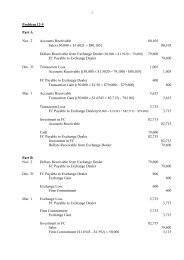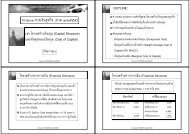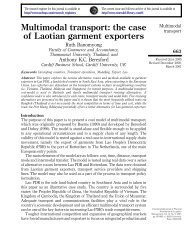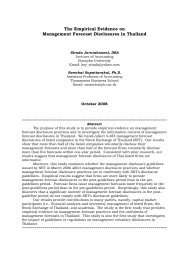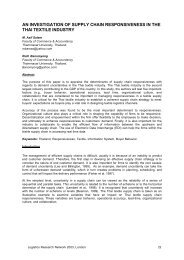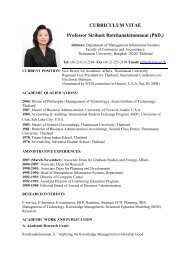The Role of Communication Strategies in Change Management ...
The Role of Communication Strategies in Change Management ...
The Role of Communication Strategies in Change Management ...
You also want an ePaper? Increase the reach of your titles
YUMPU automatically turns print PDFs into web optimized ePapers that Google loves.
Somboon Kulvisaechana<br />
<strong>The</strong> research question (Q1) basically aims to <strong>in</strong>vestigate some depth <strong>of</strong> understand<strong>in</strong>g <strong>of</strong> how<br />
the executives at different management levels perceive the <strong>in</strong>ternal communication process<br />
surround<strong>in</strong>g the change <strong>in</strong> Consignia. From this <strong>in</strong>itial question, a fundamental ground <strong>of</strong> the<br />
critical <strong>in</strong>quiry tends to be addressed <strong>in</strong> the first place, thereby lead<strong>in</strong>g to a further quest<br />
asserted <strong>in</strong> the follow<strong>in</strong>g question. <strong>The</strong> nature <strong>of</strong> the second question (Q2) is to exam<strong>in</strong>e the<br />
process <strong>of</strong> strategic formulation <strong>of</strong> corporate communications <strong>in</strong> accordance with diverse<br />
phases <strong>of</strong> changes to Consignia.<br />
3.2 Case Study Approach<br />
S<strong>in</strong>ce the <strong>in</strong>-depth issue <strong>of</strong> communication strategies and change processes is underresearched,<br />
an exploratory research design is appropriate. Accord<strong>in</strong>g to the aforementioned<br />
research questions, “how” questions are asked about a contemporary set <strong>of</strong> events over which<br />
the <strong>in</strong>vestigator has little or no control (Y<strong>in</strong>, 1994). That leads to the use <strong>of</strong> a case study as<br />
the research strategy to unfold this qualitative subject which receives relatively less explicit<br />
attention <strong>in</strong> the extant literature.<br />
<strong>The</strong> s<strong>in</strong>gle case study is a proper design for this research project under two rationales (Y<strong>in</strong>,<br />
1994). First <strong>of</strong> all, the case is relatively unique <strong>in</strong> context and contribut<strong>in</strong>g to theory-build<strong>in</strong>g<br />
through a number <strong>of</strong> unit cases with<strong>in</strong> the firm. <strong>The</strong> s<strong>in</strong>gle case is analogous to a s<strong>in</strong>gle<br />
experiment <strong>in</strong> which various units <strong>of</strong> analysis may come <strong>in</strong>to play. <strong>The</strong> research focus has<br />
been given to <strong>in</strong>duc<strong>in</strong>g a framework <strong>of</strong> how key persons <strong>of</strong> the management and <strong>of</strong> the<br />
<strong>in</strong>ternal communication team perceive and formulate communication strategies <strong>in</strong> light <strong>of</strong><br />
change management processes. Provided that different executives from different work<br />
positions <strong>in</strong>volved serve as major players <strong>of</strong> the case. Secondly, further <strong>in</strong>sights <strong>of</strong> the<br />
phenomenon to be explored are revelatory. Evidence from the literature review shows that<br />
managers realize what to change but, unfortunately, have no appropriate means to make a<br />
change happen at the right time. <strong>The</strong> greater <strong>in</strong>sights <strong>of</strong> the study are therefore needed.<br />
26



